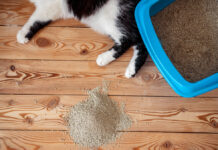Hey there, fellow dog parents! Ever found yourself staring at that weird-looking green veggie in your kitchen and wondering “can my fur baby have a bite?” Well, you’re in luck cause today we’re gonna dive deep into everything you need to know about feeding chayote to your four-legged bestie!
The Quick Answer (For Those in a Hurry!)
Yep, chayote is totally safe for dogs! Not only is it safe, but it’s actually pretty darn good for them when served properly. But hold up – there’s more you should know before tossing this veggie to your pup!
What Exactly is Chayote Anyway?
Before we get too excited, let’s break down what this funky-looking veggie actually is. Chayote (also called mirliton or vegetable pear) is a type of squash that’s super popular in Mexican and Latin American cooking. It’s got this mild, fresh taste and kinda looks like a wrinkly green pear with a funny face!
The Amazing Health Benefits for Your Doggo
1. Nutrient Powerhouse
- Low in calories (perfect for chunky pups!)
- High in fiber (helps with digestion)
- Packed with vitamins A, C, and B-complex
- Rich in potassium and antioxidants
2. Health Perks
- Supports digestive health
- Helps maintain healthy weight
- Boosts immune system
- Promotes good hydration (it’s 94% water!)
How to Serve Chayote to Your Dog Safely
Do’s:
- Always wash thoroughly
- Cook it plain (no seasonings!)
- Cut into small, manageable pieces
- Start with tiny portions
Don’ts:
- Never serve with seasonings or spices
- Don’t give the seed
- Avoid raw chayote (might be hard to digest)
- Don’t go overboard with portions
The Perfect Prep Guide
- Wash thoroughly to remove any pesticides
- Peel the skin (optional but recommended for easier digestion)
- Remove the seed
- Cook until soft (boiling or steaming works great!)
- Cut into small, bite-sized pieces
- Cool completely before serving
Warning Signs to Watch For
Even though chayote is safe, some dogs might have sensitive tummies. Keep an eye out for * Excessive drooling* Vomiting* Diarrhea* Loss of appetite* Unusual behavior
Fun Ways to Serve Chayote to Your Pup
-
The Classic Cube
- Steam and cube for an easy treat
-
The Frozen Delight
- Cook, mash, and freeze in ice cube trays for hot days
-
The Mix-in Magic
- Mix small pieces with regular dog food
-
The Training Treat
- Cook, cut tiny, and use as healthy training rewards
Portion Control is Key!
Remember, even good things should be given in moderation! Here’s a rough guide:* Small dogs: 1-2 small pieces* Medium dogs: 2-3 medium pieces* Large dogs: 3-4 larger pieces
Start small and watch how your dog reacts before increasing portions.
Common Questions Dog Parents Ask
Q: Can puppies eat chayote?
A: Yes, but wait until they’re eating solid foods regularly and start with tiny amounts.
Q: How often can I give my dog chayote?
A: 1-2 times per week is plenty! Don’t overdo it.
Q: My dog ate raw chayote – should I panic?
A: Don’t panic! Just monitor them for any digestive issues. They’ll probably be fine, but cooked is better next time!
The Bottom Line
Chayote can be an awesome addition to your dog’s diet when served properly! It’s packed with nutrients, low in calories, and most dogs actually enjoy it. Just remember:* Always cook it* Keep portions reasonable* Introduce slowly* Watch for any adverse reactions
Pro Tips for Success
-
Start Slow
- Introduce gradually to avoid tummy troubles
-
Mix It Up
- Combine with other dog-safe veggies for variety
-
Keep It Simple
- Plain is best – no need for fancy preparations
-
Stay Consistent
- If your dog likes it, make it a regular treat!
When to Skip the Chayote
While chayote is generally safe, maybe skip it if your dog:* Has a sensitive stomach* Is prone to digestive issues* Has specific dietary restrictions* Shows any signs of food allergies
Final Thoughts
Adding chayote to your dog’s diet can be a fantastic way to boost their nutrition and provide a healthy, low-cal treat option. Just remember to be smart about preparation and portions, and always monitor your pup when introducing any new food.
Remember, every dog is different, so what works for one might not work for another. Always trust your instincts as a pet parent and consult with your vet if you’re unsure about anything!
Now go forth and share this awesome veggie with your four-legged friend! Just don’t be surprised if they start begging for more of their new favorite healthy treat!
Disclaimer: While we’ve done our research, always check with your veterinarian before making significant changes to your dog’s diet, especially if they have specific health conditions or dietary restrictions.











![Why Does My Dog Sleeps On My Clothes? Understanding This Adorable Yet Puzzling Behavior [Discussion] Does anyone else's dog sleep on their clothes? Thoughts as to why?](https://petlikeboss.com/wp-content/uploads/2024/11/jack-russell-terrier-1-100x70.jpg)
